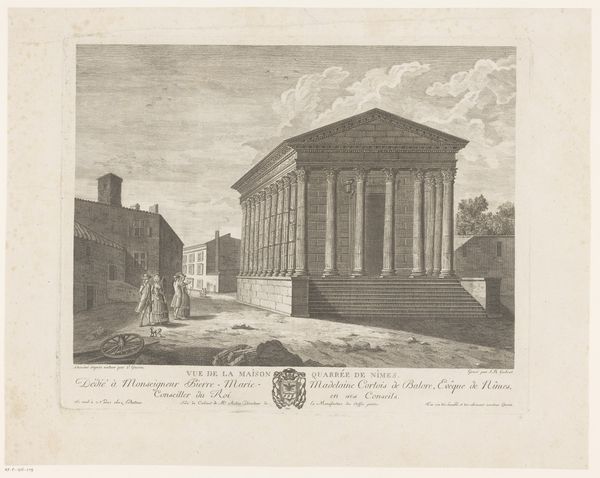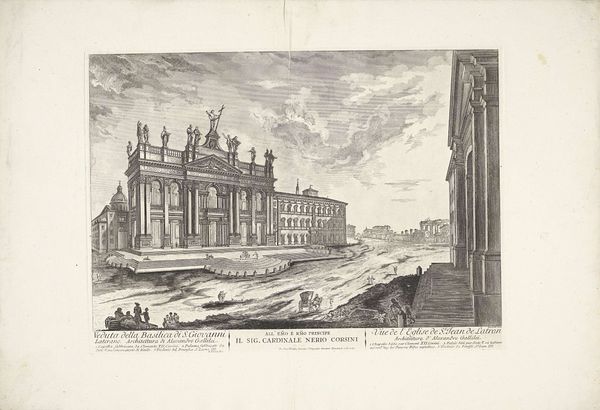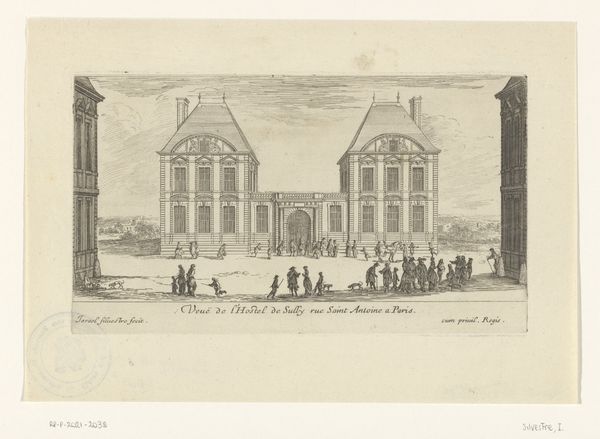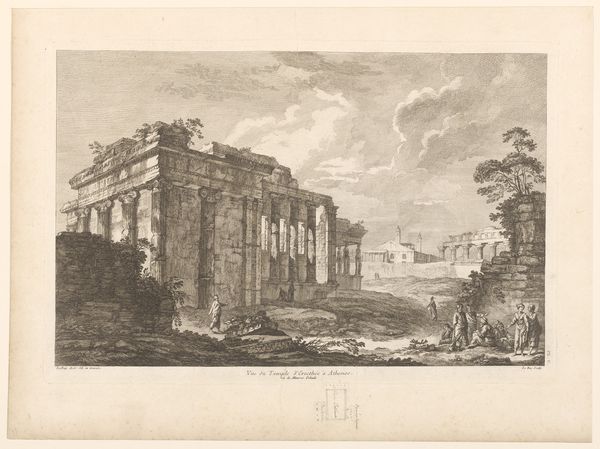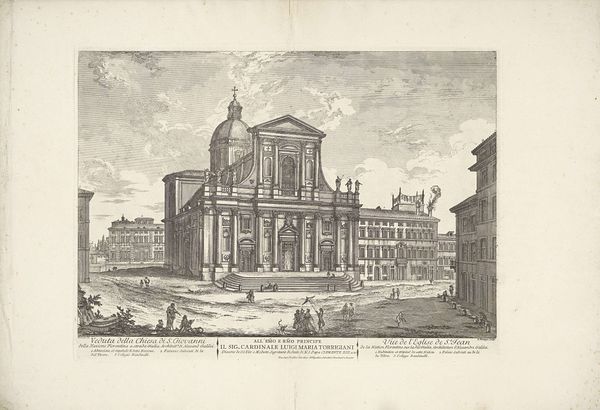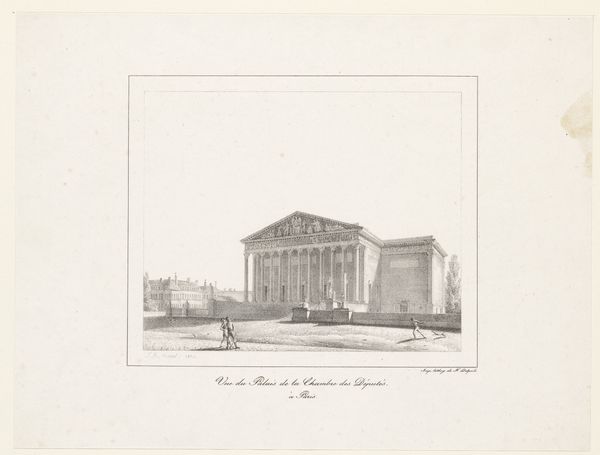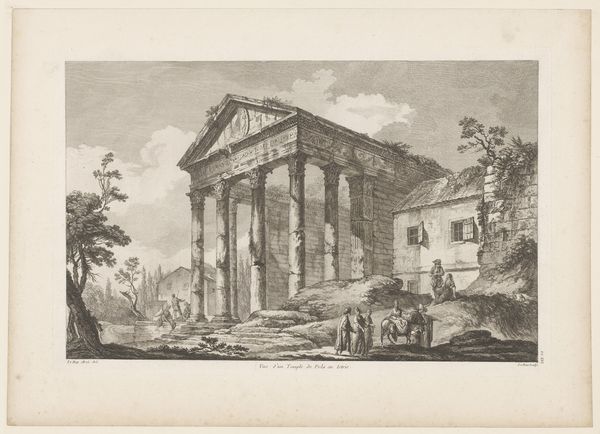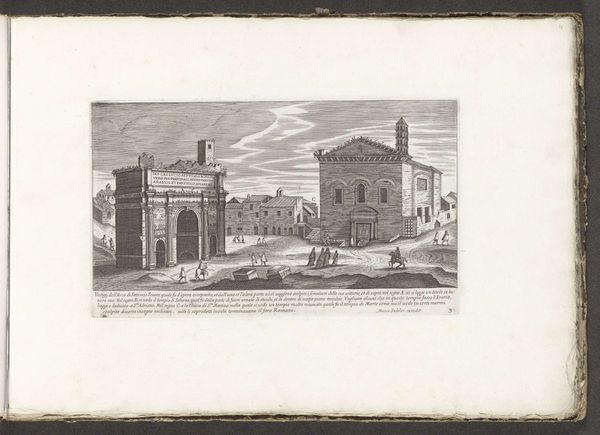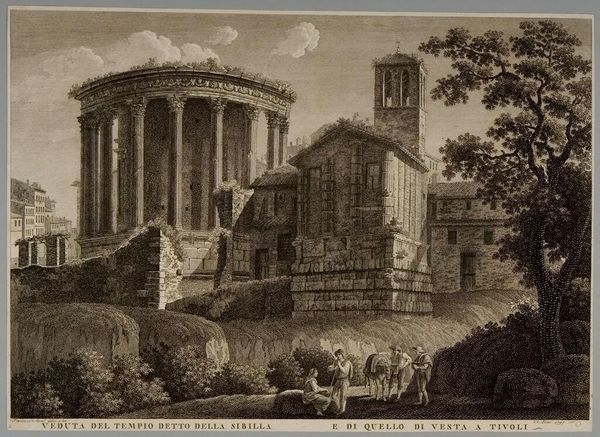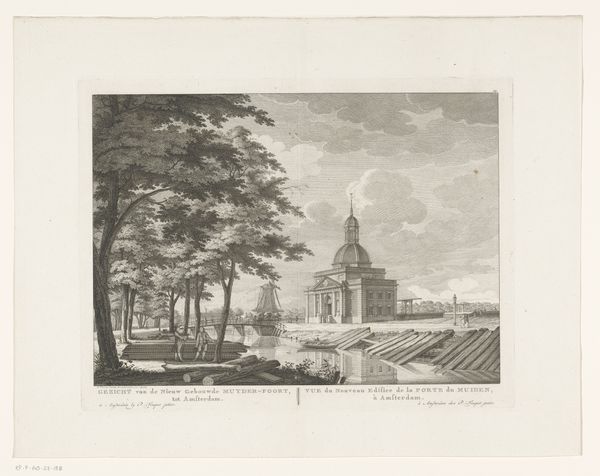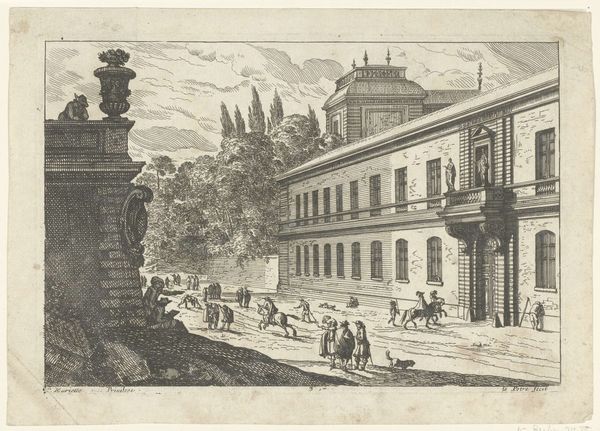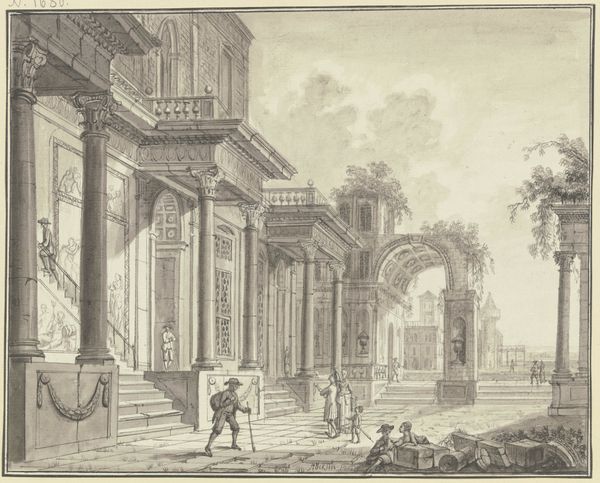
print, engraving, architecture
#
neoclacissism
# print
#
landscape
#
cityscape
#
engraving
#
architecture
#
realism
Dimensions: height 400 mm, width 545 mm
Copyright: Rijks Museum: Open Domain
Editor: So, this engraving, "Tempel van Vesta te Rome" by Domenico Montaigú, from around 1750 to 1799, shows a very ordered cityscape. The temple looms large, almost severe. What leaps out at you when you look at this? Curator: You know, it's funny, isn't it? How order, in this hyper-realised Neoclassical way, can actually feel unsettling. Like life lived according to someone else's blueprint. But then, look closer. Notice the almost chaotic, untamed foliage pushing up against the temple, or those crumbled ruins at its base? Editor: I do, now that you mention it! There’s definitely a contrast. Curator: Exactly! Montaigú isn't just celebrating Roman grandeur. I think he's hinting at time, entropy, nature's persistent claim on even the most imposing structures. He’s whispering about life pushing against these constructs, no matter how monumental. Does it feel melancholic to you? Like a memento mori in stone? Editor: I can see that melancholy. It's like the buildings are enduring, but also slowly fading. Curator: Think about the people in the foreground too. They seem so small, almost insignificant, in contrast to this enduring structure, dwarfed in a landscape of memory and stone. Do you see that perhaps the artist suggests we might find beauty not just in what endures, but in what’s lost or being reclaimed? Editor: That's a beautiful way of looking at it. I was so focused on the formal perfection that I almost missed the subtle hints of decay. Curator: Sometimes, what we think are flaws are where the deepest beauty resides. It shows us something new, even centuries later, doesn’t it? Editor: Absolutely. This makes me appreciate engravings so much more, thank you!
Comments
No comments
Be the first to comment and join the conversation on the ultimate creative platform.
